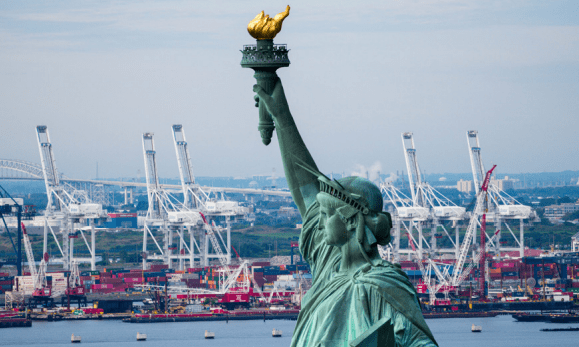Chinese investment in the United States slowed in the last four years, according to data from the Department of Commerce.
In the last decade, from 2014 to 2023, Foreign Direct Investment (FDI) arrivals to the United States originating from China totaled $293.851 billion dollars.
The all-time high was reached in 2019, with inflows of $38.792 billion.
But since then, U.S. uptake of Chinese FDI slowed, to $28.043 billion.
Chinese investment in the United States
The following is the trend of Chinese FDI to the United States, in millions of dollars:
- 2013: 7,855.
- 2014: 10,071.
- 2015: 14,714.
- 2016: 31,871.
- 2017: 36,447.
- 2018: 35,437.
- 2019: 38,792.
- 2020: 36,738.
- 2021: 31,831.
- 2022: 29,907.
- 2023: 28,043.
New investments
Data from the U.S. Bureau of Economic Analysis (BEA) indicates that new FDI from China peaked in 2016 at $27.4 billion. However, by 2023, this figure plummeted by 97.7%, reaching just $621 million. In the same year, Chinese entities held $62.4 billion in FDI stock on U.S. soil.
The U.S.-China Economic and Security Review Commission attributes this drop to political changes in both countries. Beginning in 2016 and continuing through 2017, China instructed its investors to curtail certain foreign investments. It also tightened capital controls within the country. On the other hand, in 2018, the United States passed the Foreign Investment Risk Review Modernization Modernization Act (FIRRMA). This legislative framework expanded the authority of the Committee on Foreign Investment in the United States (CFIUS) to block sensitive investments, primarily from China.
CFIUS, an interagency committee chaired by the U.S. Secretary of the Treasury, oversees FDI transactions in the United States. Its main objective is to ensure that such investments do not pose a risk to national security. FIRRMA strengthened its capabilities by expanding the range of transactions under review. It also made the filing of certain sensitive transactions, previously voluntary, mandatory. It also included more national security-related factors in its analysis and allocated more staff and funding to improve its operation.

